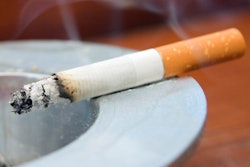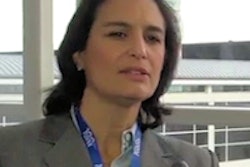Lung cancer screening was found to be reasonably cost-effective in the National Lung Screening Trial (NLST), but real-world results could vary based on screening methodology and other factors, according to the results of a long-awaited analysis in the New England Journal of Medicine.
Researchers from the NLST team found that screening with low-dose CT as performed in the trial cost less than $100,000 per quality-adjusted life year (QALY) gained, but whether or not screening performed outside the trial will be cost-effective depends on how screening is implemented, the authors wrote.
"It appears that screening is cost-effective in NLST, although there were a few baseline assumptions that we had to make which are certainly open to discussion," lead author Dr. William Black told AuntMinnie.com. "The other major finding is that while it appeared to be cost-effective, it varied a lot by patient subset relating to assumptions and implementation in the real world. So yes, it can be cost-effective, but it has to be done in special ways."
Some of the variables are modifiable, while others, known as "state of nature" variables, control for things such as how long people live after lung cancer diagnosis and how many lung cancers will show up after the screening program has stopped. These can't be modified or predicted from the study data, added Black, who is a professor of radiology at Dartmouth-Hitchcock Medical Center.
For example, one of the most important factors in screening that can vary is the cost of the screening intervention itself, the authors wrote (NEJM, November 6, 2014).
"Costs could also increase considerably if patient counseling and follow-up are properly accounted for," Black and colleagues wrote. "As the true cost of screening approaches $500, the cost becomes prohibitive."
The cost of screening could also become prohibitive if the number of follow-up CT scans increased. However, the American College of Radiology (ACR) has developed a reporting system that should raise the positivity threshold used in NLST and could substantially decrease the number of follow-up CT scans acquired, the authors noted.
QALYs, ICERs, and variability
The cost-effectiveness of low-dose CT lung cancer screening is a major factor for policymakers as they decide on the parameters of screening and whom screening will cover, the authors wrote. Previous cost-effectiveness analyses came in with results "ranging from very favorable to unfavorable," reflecting ongoing uncertainty regarding the effectiveness of the exam and the different methods used for analyzing costs.
The scope of their analysis is limited to NLST itself, but its extensive sensitivity analysis is relevant to extrapolation beyond the NLST findings, Black and colleagues added.
The study estimated QALYs, costs per person screened, and incremental cost-effectiveness ratios (ICERs) for the three separate screening strategies in NLST, namely screening with radiography, screening with low-dose CT, and no screening.
All life-year estimates were based on the number of observed deaths that occurred during NLST and the projected survival of participants who were alive at the end of the trial. Analysis of subgroups based on age, sex, smoking history, and risk of lung cancer included sensitivity analyses based on a range of assumptions, the group wrote.
Observed stage-specific mortality rates from NLST were used to estimate life expectancy for the first five years after diagnosis. Estimates for later years, for which NLST data were sparse, were adjusted to account for the decline in the death hazard over time seen in U.S. Surveillance, Epidemiology, and End Results (SEER) data.
The researchers based the costs per person on the sum of direct medical costs (utilization, diagnostic workup for positive results, symptoms, or lung cancer treatment) obtained from an American College of Radiology Imaging Network (ACRIN) subgroup of 18,840 participants. They based indirect costs on time and travel for both participants and caregivers, settling on an effective total cost of $500 per participant with at least one clinically significant incidental finding. The group added costs of medical care during and after the trial for lung cancers diagnosed during the trial and for hypothetical cases of radiation-induced cancer from CT.
Higher costs, fewer deaths with CT screening
Among the 53,302 participants, 1,076 in the CT group and 978 in the radiography group were diagnosed with lung cancer. From the CT group, 49 died of lung cancer and 49 died of other causes. From the radiography group, 552 died of lung cancer and 35 died from other causes, the researchers found.
Compared with no screening, screening with low-dose CT cost an additional $1,631 per person (95% confidence interval [CI]: 1,557-1,709) and conferred an additional 0.0316 life years per person (95% CI: 0.0154-0.0478) and 0.0201 QALYs per person (95% CI: 0.0088-0.0314).
Discounted life expectancy and quality-adjusted life expectancy were higher in the CT group than in the radiography group, and the differences between the groups grew when projected over a lifetime horizon, which accounted for life years saved after the trial, the authors wrote.
The ICERs came in at $52,000 per life year gained (95% CI: 34,000-106,000) and $81,000 per QALY gained (95% CI: 52,000-186,000). However, the ICERs varied widely in subgroup and sensitivity analyses.
The range for incremental QALYs was wide (0.0027 to 0.0515), with the highest QALY value almost 20 times higher than the lowest value, they wrote. As a result, the range for ICERs was just as wide (varying from $32,000 to $615,000 per QALY gained).
The ICER was lower for women than for men ($46,000 for women versus $147,000 for men per QALY gained), and it was lower for current smokers than for former smokers (ranging from $43,000 for current smokers to $615,000 for former smokers per QALY gained). ICERs were lower for the three oldest age groups than for the youngest age group, and they were lower for the two quintiles of the population with the highest risk of lung cancer than for the three quintiles with the lowest lung cancer risk.
The results were highly sensitive to several of the group's base-case assumptions, the authors wrote. For example, the $81,000 ICER fell to $54,000 per QALY gained when the reduction in mortality from causes other than lung cancer was included in the analysis. And it fell to $55,000 per QALY gained when only half rather than all the excess lung cancers in the CT screening group were attributed to overdiagnosis, and to $62,000 per QALY gained when the risk of death from lung cancer following radiography screening compared to no screening was reduced. QALYs rose to more than $100,000 when the cost of future care including screening and follow-up exams was increased or survival estimates were reduced.
Much of the variability in costs versus previous analyses can be explained by the number of follow-ups after examination (one in NLST versus four by McMahon et al), according to Black and colleagues. In addition, much of the higher cost estimates in this study versus a report by Pyenson et al is explained by the latter's assumed reduction in mortality that was higher than the 20% seen in the NLST results. The results also varied widely based on subgroups of NLST participants.
"It's really much more effective if very high-risk people are screened, and it seems to be more effective in women than men," Black said. Much of that difference may be related to the fact that women get more adenocarcinomas, which have better prognoses after treatment than other cancer types, he added.
But NLST wasn't designed for these subgroups and can't be counted on for rigorous analysis, Black said.
"A lot of this subgroup data represents a kind of post-hoc analysis," he said. "It can sort of provide clues as to what we want, but it's not definitive. You always get into very small [patient] numbers and can always find something extreme in subgroup analyses."
Screening was more cost-effective in NLST for current versus former smokers, probably because current smokers are at higher risk; however, the trends weren't uniform, most likely due to variations in numbers in the total sample, the authors wrote.
Black said he has sympathy for what the Medicare Evidence Development and Coverage Advisory Committee (MEDCAC) was up against in April when determining the benefits of screening and assessing the limitations of NLST.
"I don't disagree with a lot of what MEDCAC is saying -- 'OK, it may work now, but how can we be sure it will work in real world?' " Black said. The panel wants to make sure the screening centers are able to do screening properly, informing patients of the risks and benefits, maintaining a registry, following up on patients, etc., and there is a lot to do surrounding screening -- none of which is reimbursed, unfortunately.
"So there are some challenges," he said.
But from what he has heard from ACR and other organizations regarding their plans for quality control, it is entirely possible and likely that centers will learn everything they need to do to screen properly, Black said.




















